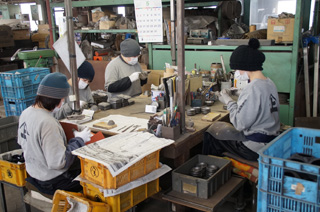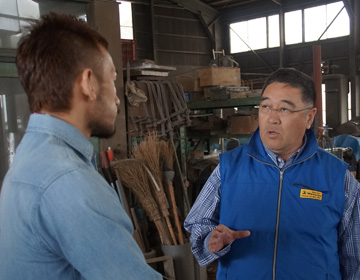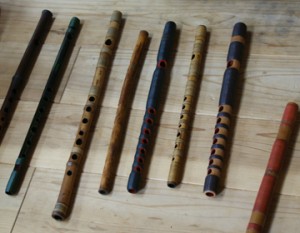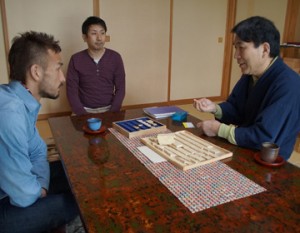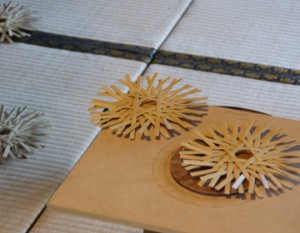Cast aluminum?
You usually think of iron when you think of cast metal, but we saw a lot of cast metal products that were not iron, including bronze and surprisingly, cast aluminum products. We were told that aluminum casting is often used for lampshades. As technology advanced, the variety of metal used in casting widened, and now variou types of metal are used, in many sizes and shapes. Even large items like road lighting equipment can be made by metal casting.
Yamagata has been known for its history of metal casting. Its history goes back to the Heian period. The industry boomed during the early Edo period, and Kikuchi Hojudo was founded at about that time in history, in 1604. Today they make traditional cast iron kettles, as well as wrought iron pots that suit the modern home. Rice cooking pots known to cook delicious rice are also popular.
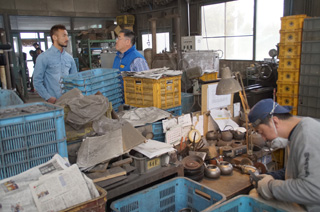
The best feature of Yamagata cast metal – thinness
The presence of a heavy cast iron pot is certainly one of the qualities of cast metal products, but the best quality of Yamagata cast metal is in their thinness. The thinness makes it possible to express a finer texture, and their beauty is outstanding. The items found in Kikuchi Hojudo are not just simple country quality, but many are refined and beautiful.
They are almost like art objects, and Nakata asked the president Noriyasu Kikuchi if there were any items made as art pieces. “”Kogei” should be distinguished from art. ”Kogei” has people who use them. I want to make things that are actually used in daily life,“ he answered. He is of the opinion that the skill to make art objects will just fade away when the particular artist stops his creative activity. That’s why Kikuchi defines his works as ”kogei”, and places great importance on how the techniques involved in making molds and casting are both handed down to the next generation.
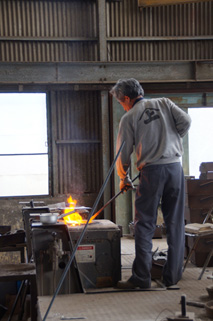
Difficulty in recovering lost skills
Kikuchi is the 15th generation owner of Kikuchi Hojudo, but one of the things he thinks about now is to “passing on the skills to the next generation”. One of the popular lines of Kikuchi Hojudo is ”WAZUQU” which is popular overseas as well.
Written as 和銑 in ”kanji”, it is a traditional Japanese metal refined from iron sand using charcoal. The manufacturing skill for the metal was revived by Human National Treasure Tetsushi Nagano, whom he happens to be related to, after 20 years of work. Even though the skill had only been lost for 2 years, it took 20 years to revive.
“Therefore, skills are something you have to pass on perpetually. As I work, I am always conscious about the continuation of skills.” Kikuchi told us.
Kikuchi has worked on nurturing the next generation for more than 15 years, and many of his students are already active on the front line. Today there are 17 people in the workshop, all of whom were involved in their work with various expressions on their faces. Tradition is an easy word, but it’s something that if lost for one day, takes three years to get back. It is under such conditions that the centuries old tradition is built upon and passed on.
